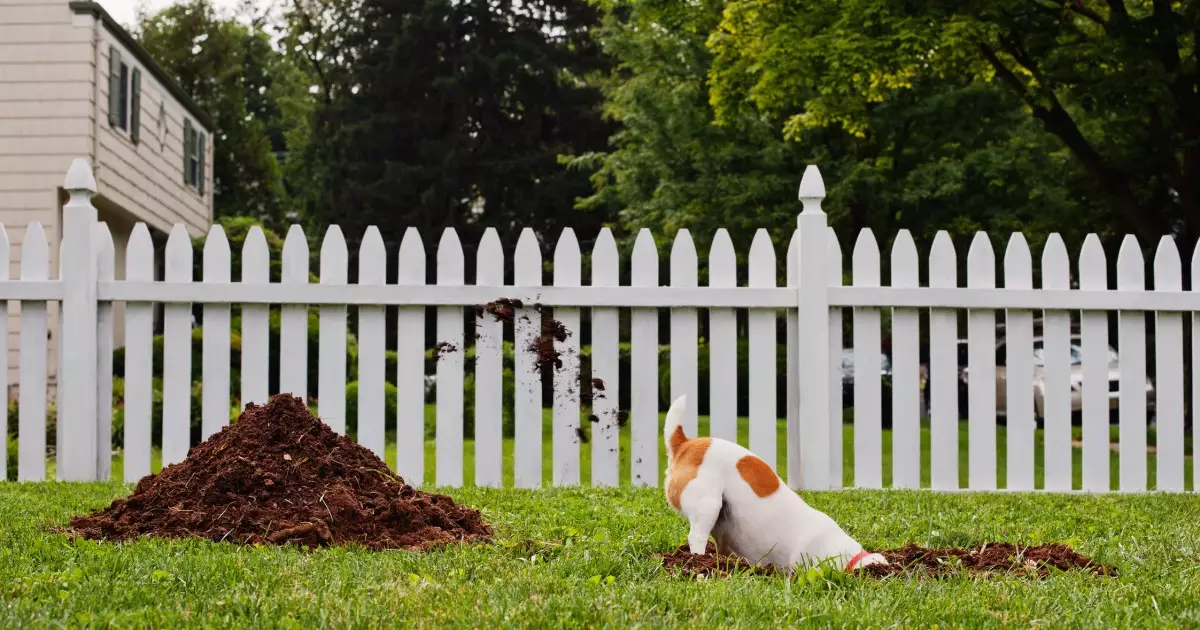When observing a dog digging energetically in the backyard, one may feel compelled to marvel at the seemingly effortless artistry of the action. Dogs dig for various instinctual reasons, and this behavior is more pronounced in certain breeds. Understanding the underlying motives behind this canine activity not only sheds light on the dog’s natural instincts but also plays a crucial role in enhancing their well-being and happiness.
Digging is an instinct that harkens back to a dog’s wild ancestors. In the natural world, the act of digging serves multiple purposes: creating shelters to escape extreme temperatures or hiding valuable resources, such as food. Even our domesticated dogs retain this innate drive to dig as they navigate their environments. For instance, you might catch your pet attempting to “dig” into a pile of laundry or a plush rug, mimicking behaviors that would have once been practical in the wild.
Aside from seeking shelter, foraging for food is another motivating factor in a dog’s digging behavior. Dogs have retained the capacity to hunt for edible roots or buried treats in the ground. While your dog may already have a full bowl, the act of digging can still present a thrilling opportunity for exploration and play. This instinct, once essential for survival, may now manifest more as an outlet for energy or boredom, leading to playful antics in the backyard.
Certain dog breeds are more likely to engage in digging due to their ancestral purpose. Breeds such as Terriers, originally bred for hunting burrowing prey like rodents, exhibit particularly strong digging instincts. Their determination and capability make them adept at burrowing into the earth, sought after for their keen tracking abilities. Similarly, breeds like Beagles, known for their scent-tracking prowess, may dig not only to hunt but also to escape enclosures in pursuit of potential prey.
Additionally, dogs bred for specific working capabilities, such as Border Collies and Shelties, require ample physical and mental stimulation. When deprived of engaging play or exercise, these breeds may resort to digging as an outlet for their pent-up energy, highlighting the need for intentional training and activity to channel their abilities positively.
As appealing as digging may seem, it can quickly become problematic, especially for dogs that are left alone for extended periods or are not adequately stimulated. Just like humans, dogs that become bored or anxious often exhibit destructive behaviors. If the digging becomes excessive, it can lead to damage around the home and garden. Addressing these issues involves providing enrichment and stimulation tailored to the individual dog’s needs.
One effective strategy is to construct a designated digging area in your yard—a “dig pit” filled with soft soil or sand bordered by rocks. By encouraging digging in this specific location and hiding toys or treats to discover, dog owners can provide a constructive outlet for this instinctual behavior. Instead of seeing it as a nuisance, owners can view digging as a potential bonding experience, engaging their dogs in a playful hunt that mimics their natural instincts.
Unaddressed behavioral issues can lead to digging becoming a chronic problem, often exacerbated by factors such as separation anxiety or a lack of socialization. Ensuring that dogs are well-adjusted and accustomed to various environments and experiences can help mitigate these tendencies. Regular interaction with other dogs and participation in stimulating activities can greatly decrease the likelihood of digging due to boredom or anxiety.
Moreover, responsible pet ownership, such as spaying and neutering, can also play a significant role in managing digging behaviors. Unaltered dogs are often more perspective-driven in their attempts to escape a confined area to find mates. A proactive approach to pet care can contribute to better training outcomes and a more harmonious domestic life.
Understanding the myriad reasons behind a dog’s digging behavior can pave the way for a happier and healthier relationship between pets and their owners. By providing appropriate outlets for these natural instincts, we can enrich our dogs’ lives while preserving our outdoor spaces. Engaging with our dogs through playful activities and ensuring their emotional needs are met will undoubtedly lead to a more fulfilling life for our furry companions.


Leave a Reply